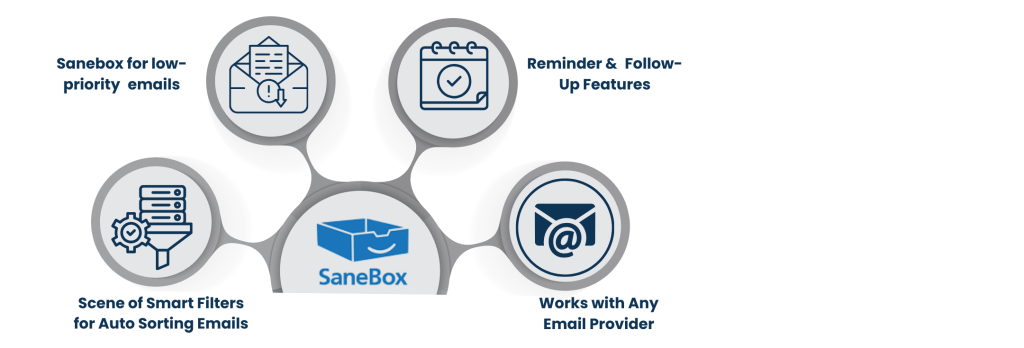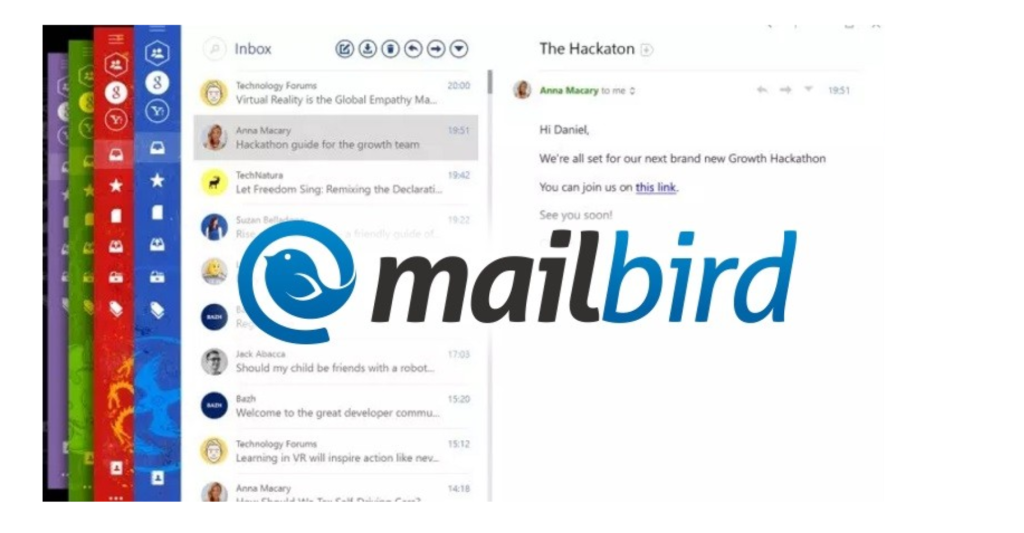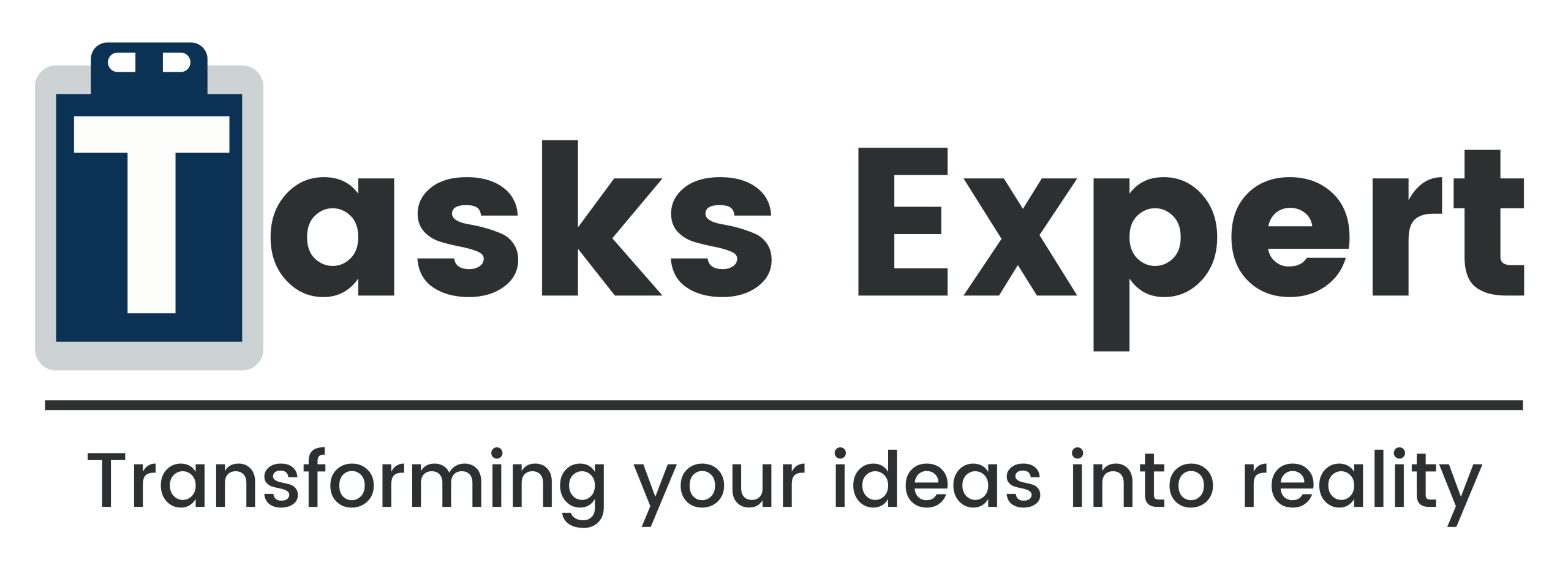Let’s be honest: As a small business owner, your inbox can quickly become a full-time job.
Client communications, leads, receipts, customer queries, supplier updates, task follow-ups, and emails never end. And if you’re a jack of all trades (and what small business owner isn’t), handling your inbox manually can put the brakes on your entire workflow — devouring hours you could spend growing your business.
This is where Email Management Tools are a lifesaver.
These tools are intended not just to handle emails but to enhance time, focus, and efficiency. They help you clean up messy inboxes, automate bland, repeated replies, send messages on a timetable, set follow-up reminders, and never forget an important email.
Here are the best email tools I’ve ever used (and heard great things about) that solved my email problems as a small business owner and helped me remain focused, stress-free and not let email chaos take over my day.
The Importance of Email Management Tools for Small Business Owners
If you own a small business, you’re not just juggling one job — you’re juggling every single job. One moment, you are closing a deal, and the next answering customer queries, sending bills, booking appointments, or tracking vendors.
And all the while, your inbox is flooded.
Without a proven system in place, emails can build up, essential messages can be overlooked, and your productivity can take a hit. That’s precisely why Email Management Tools are essential for small business success and no longer a luxury.

Here’s how these tools simplify life:
1. Focus on the Emails That Matter
Not every email in your inbox warrants your attention. Such email management tools work in the background, filtering and sorting emails based on importance automatically — surfacing emails from clients, sales inquiries, or urgent updates to the top of the inbox and putting newsletters, spam, and low-priority messages on hold. Make use of tools like Gmail’s Priority Inbox, Outlook’s Focused Inbox, or Spark’s Smart Inbox, which focuses your attention when you do check your email and only shows you what matters.
2. Use Automation for Common Queries
All small businesses have the same, repetitive emails — order confirmations, FAQ, meeting requests, or “How do I sign up? messages. Email tools can help you build templates, auto-replies, or even set up automatic workflows so that they can reply on the spot. This saves time and gives a consistent experience for customers.
3. Organize Your Inbox So It Doesn’t Become Cluttered
Email management tools assist you in keeping your inbox clean by performing bulk actions such as archiving, labeling, unsubscribing, or categorizing messages without your intervention. Apps such as Clean Email or SaneBox are the best way to declutter, organize, and comb through your inbox without manually going through individual emails.
4. Follow-ups and Deadlines Tracking
Missing a reply or follow-up on an email can cost you a client or delay a project. Email tools include built-in reminders, snooze, and follow-up tracking features to make sure nothing falls by the wayside. This can be done easily with tools such as Boomerang, SaneBox, or Spark.
5. A team working on shared inboxes
Many businesses use shared email accounts like support@ or sales@, and managing them manually can confuse teams, resulting in duplicate responses or missed emails. Tools such as Front or Help Scout enable multiple team members to collaborate in one inbox, assign emails, leave internal comments, and track response times — all in the name of smooth communication.
With proper Email Management Tools, they’ve finally taught those inbox-crazed clients a lesson that they’re in control, saving time, reducing stress, and communicating effectively without burnout.
Also Read: Virtual Assistant Services in Birmingham
Top Email Management Tools for Small Business Owners
1. Gmail with Google Workspace
If Gmail is not enough for you, combining it with Google Workspace (formerly known as G Suite) can turn this very popular email platform into an extremely powerful tool for a small business owner.
Switching to Google Workspace provides a business email address (yourname@yourcompany.com) plus a range of security, storage, and productivity features intended for businesses.

1. Smart Labels & Filters:
It automatically organizes your inbox with this feature. You can create filters that tag incoming emails by clients, projects, or certain keywords. For instance, emails from a specific client can all be labeled “Client A” automatically, so they’re easy to find. It maintains a tidy inbox and reduces time spent.
2. Schedule Send:
This feature allows you to write an email at any time and send it to send later. This is particularly helpful for communicating with customers in different time zones or simply if you’re one of those people who want to maintain a work-life balance but still send out timely emails.
3. Working Together Using Google Docs & Calendar:
Closely linked to other Google products, Gmail seamlessly integrates with Google Docs, Sheets, and Calendar, letting you quickly attach files, schedule meetings right from an email, or even collaborate in real-time with your colleagues. This ecosystem harmonizes all your communication and documentation.
4. Add-ons such as Boomerang or Gmelius:
Consider these third-party tools that supercharge Gmail. Boomerang assists with follow-up reminders and scheduling emails. Gmelius provides shared inboxes, task management, and automated workflows — effectively transforming your Gmail into a mini project management app.
Best for: Solopreneurs, remote teams, and businesses looking for a flexible, straightforward, and yet extremely customizable email management system.
2. Outlook with Microsoft 365
When used with Microsoft 365, Outlook is one of the most trusted and powerful Email Management Tools for people who own small businesses, particularly for those who are already within the Microsoft space.
It does provide a lot more than simple email sending and receiving. Outlook is designed to keep you productive across scheduling and task management from one place.

1. Focused Inbox:
The Focused Inbox in Outlook automatically separates important emails from less important ones. Emails from clients, team members, and other regular contacts show up in your Focused tab, while newsletters, ads, and other non-urgent updates land in the Other tab. This intelligent functionality assists passive business owners in staying on track and avoiding unnecessary distractions from urgent communication.
2. Built-in Calendar Integration:
Your schedule is easier to maintain with Outlook, as the calendar is woven into your inbox. You can schedule meetings from your emails, check available times, and set reminders — all within the same window. It is a revolutionary way to manage appointments, client calls, and project deadlines.
3. Task Tracking Features:
Outlook allows you to transform emails into tasks. When you get a request from a client, you can flag that email right away and add it to your to-do list. You’ll receive reminders, can set due dates, and even redo tasks to get it organized.
4. Email Templates & Scheduling:
Sending the same type of email again and again? Outlook enables you to create and save templates for common responses such as quotes, onboarding instructions, or FAQs.
It allows users to schedule their emails to go out at a later date, which is especially helpful if you want to get in touch during prime time.
Best for: Microsoft 365 tools users in small businesses who like a professional, secure, and feature-rich email management system blended with their everyday operations.
3. Clean Email
If your inbox contains thousands of unread emails, stale newsletters, or uninteresting notifications, Clean Email is for you. This tool is created with small biz owners in mind so they can organize, clean, and keep a neat inbox – all without wasting time.
Clean Email is unlike traditional email clients because it is built completely to manage, organize, clean, and declutter your emails in no time.

1. Bulk Email Cleaner:
Clean Email helps you clean up your inbox in bulk — that is, you can select hundreds or thousands of similar emails (like newsletters, social media alerts, or promotions) and archive or delete them all at once. This cuts down on hours of manual deleting and allows you to free up space in an instant.
2. Auto-Organization Features:
A leading feature of Clean Email is its ability to automatically group similar types of emails — social media updates, online shopping, subscriptions, and more. It then recommends intelligent actions such as archiving, labeling, or deleting according to your past behavior.
3. Unsubscribe from Unwanted Lists:
Other features include ease of use for unsubscribing from pesky or unwanted mailing lists directly in the tool. It shows you all of the senders you’re subscribed to and lets you unsubscribe from multiple lists in a few clicks.
4. Email Categories for Easy Sorting:
It creates custom folders and labels such as “Old Emails,” “Emails from Social Media,” or “Emails You Haven’t Read in 6 Months” to help you easily clean up, sort, and manage your inbox.
Best for: Small business owners who feel buried beneath an inbox full of junk mail and want a quick, easy, and automated way to clean it up and keep their email a relaxing experience.
Also Read: Virtual Assistant Services in Bristol
4. SaneBox
SaneBox – Top-of-the-line Email Management Tool for small business owners. Automate your inbox without changing your email provider. Works perfectly with Gmail, Outlook, Yahoo, Apple Mail, and virtually every email client.
What makes SaneBox unique is that it learns your email habits and will organize your inbox for you based on what matters to you.

1. Scene of Smart Filters for Auto Sorting Emails:
SaneBox has a look at your email history and will prevent unimportant emails from going into your main inbox. Messages from new contacts, newsletters, or less important senders go into folders such as SaneLater or SaneNews, freeing up your main inbox.
2. Sanebox for low-priority emails:
This special folder is like a holding area for emails that can afford to wait — marketing emails, updates, and non-urgent communications. You can record these checks at your leisure, without these distractions to your workflow.
3. Reminder & Follow-Up Features:
SaneBox allows you to set automatic reminders if someone hasn’t responded to your email in a given time frame. It also offers a “Snooze” feature that lets you hide an email from your inbox temporarily so you can have it come back when you’re ready to handle it.
4. Works with Any Email Provider:
The great thing about SaneBox is that you don’t have to install a new email app or even switch services. It plugs directly into your current email, so it’s quick and painless to set up.
Best for: Small business owners needing automated, intelligent email segmentation and sorting, and peace of mind without overhauling their email system.
5. Front
Front is a strong Email Management Tool specifically created for small businesses and teams that handle shared email addresses (support@, sales@, and info@). It merges the comfort of email with the power of team coordination tools, enabling several people to collaborate inside the same inbox without stepping on each other’s toes.
If you have a high volume of customer emails to receive and respond to, this tool is ideal for customer support, client-facing teams, or any small business.

1. Shared Inboxes for Teams:
Front lets your whole team work together on shared email accounts. Everyone can see who’s working on what, assign emails to members of a specific team, and prevent duplicate replies. This enables them to respond earlier and serve customers efficiently.
2. User-Defined Guides for Private Team Access:
To save having to forward emails or set up separate chats, Front allows your team to leave internal comments directly inside the email string. This means you can discuss a customer issue, ask questions, or provide context without the customer seeing those notes.
3. Automation of Tagging and Workflows:
Front lets you tag emails by priority, topic, or client name, helping you sort and find messages down the line. Like daisy chaining by subject line to catch re: and fwd: thread drift, you can also create automation rules to assign emails based on sender, subject, or keywords for coverage — so no stray emails fall through the cracks.
4. Best Practices for Analytics and Performance Tracking:
Front has analytics tools so business owners can monitor email response times, who is handling the most messages, and where customer communication gets bogged down.
Good for: Small businesses managing customer support, sales inquiries, or team collaboration with shared email accounts, and those who want to do it all efficiently in one place.
6. Mailbird
Mailbird – An All-In-One Email Management Tool for busy small business owners who need to keep up with multiple email accounts as well as communication platforms in one clean interface.
Its biggest strength comes from unifying not just emails but other types of communication like messaging apps, calendars, and task management tools — saving business owners’ time and reducing app-switching fatigue.

1. Unified Inbox Across Multiple Accounts:
Mailbird lets you connect and manage all your accounts — Gmail, Outlook, Yahoo, and others — in one place. You do not need to log into different platforms. You can view and respond to all your emails from a single, streamlined dashboard.
2. WhatsApp, Slack, Google Calendar & Other App Integrations:
In addition to email, Mailbird connects common tools such as WhatsApp, Slack, Google Calendar, Asana, Dropbox, and many more directly in the interface. This allows small business owners to handle their communication, schedule, and files without having to flip between different applications.
3. Customizable Layout:
Mailbird puts you in control of how your inbox behaves and looks. You can personalize layouts, themes, and views for an email workspace that tells everyone you are doing things your way.
4. Speed Reader Feature:
It assists you in quickly reading and processing emails. It highlights words to speed up our reading — ideal for entrepreneurs who need to power through a lot of emails quickly.
Good for: Small business owners who have two or more email accounts and communication hubs to manage and want an extremely customizable, contemporary, usable, comprehensive email management tool that’s in one dashboard.
7. Spark Email
Spark Email is the sleekest and smartest Email Management Tool offered to individuals, startups, and small business teams to manage email in better ways. Its smart features and collaboration tools are widely appreciated, too, which makes it a great option for busy small business owners.
What’s unique about Spark is its emphasis on collaboration and productivity inside email.
Smart Inbox – For Important Emails Only
categories such as Personal, Notifications, and Newsletters. That means client or priority emails will stay on top, while promotional or lower-priority emails are pushed aside — allowing small-business owners to take care of what matters first.

1. Team Email Collaboration:
One of the hallmarks of Spark is that it enables teams to work together on email drafts in real time. Many team members can comment, edit, and collaborate on an email together before sending it. This is very helpful when doing customer support or writing a proposal, or communicating with sensitive clients.
2. Schedule Send & Reminders:
Spark allows you to schedule emails to go later so you can hit clients when they’re most available. The built-in reminder tool makes sure important emails aren’t lost to the daily flood of messages or forgotten about until it’s too late.
3. Pre-Written Email Templates:
Template messages for common replies to save time and use for onboarding a client, FAQs, proposals, etc. This feature helps keep all your communication in context and fast.
Best for: Small business owners, remote teams, and startups in need of a smart, collaborative, and productivity-oriented email management solution.
Also Read: Virtual Assistant Services in Cambridge
What Are the Key Benefits of Email Management Tools?
Investing in Email Management Tools isn’t just about glancing at the contents of your inbox — it’s about working smarter. The right tool pays dividends in hours of your week, less mental fatigue and guilt, and focus on the things that move the business forward.

Here’s how these tools are yielding results for small business owners:
1. Increased Time to Focus on Core Business:
Time is your most precious resource. Instead of wasting time sorting, responding to, or deleting emails all day, these tools automate it. You receive back valuable hours of your time that you can use to land deals, service clients, or grow your business.
2. Reducing Stress from Operating an Overloaded Inbox:
Having a messy inbox means cognitive pollution. It’s an overwhelming thing to see 1,000+ unread emails and have no idea which important ones are. That’s where email management tools come in; they help you clear your inbox and organize it in a way that you can start each day with a clean slate and a task list that allows you to focus on what matters.
3. Improved Client Communication:
Quick interaction with customers helps gain trust and credibility. Schedulers that dappled your emails, reminders that reigned from your calendar, quick templates that left no client without an answer and thus no client that wasn’t paid any mind.
4. No Missed Leads or Deadlines:
That said, missed follow-ups are lost opportunities. Smart inbox tools can track conversations, set reminders to follow up, and even snooze non-urgent emails, meaning you’ll never forget to respond or miss a deadline again.
5. Automated Workflows – Work Smarter:
Automation is a game-changer. From auto-responses to filtering, tagging, and scheduled sends, these tools build a seamless system around your daily communication, with less manual labor needed on your end or your team.
6. Make Collaboration and Communication a Pleasure, Not an Email Nightmare:
For companies that need shared inboxes, work tools such as Front or Spark allow your team to collaborate. Assign emails, comment internally, and notice responses — all without losing visibility or duplicating work.
The Right Email Management Tools Make Your Inbox Work for You — Not Against You.
Conclusion
Your email shouldn’t be your greatest time sink as a business owner. The right Email Management Tools are available to organize your communication, stay focused on growth, and respond to the client without delay or stress.
At Tasks Expert, we help small business owners with these kinds of essential but time-consuming tasks. Our virtual assistants help you organize and be productive every single day, including management for email inboxes, scheduling, data entry, and administrative tasks.
CTA (Subtle):
Do you want to minimize most of your time while staying on top of your email? Focus on growing your business and let Tasks Expert take care of the admin.
About Us
Tasks Expert offers top-tier virtual assistant services from highly skilled professionals based in India. Our VAs handle a wide range of tasks, from part time personal assistant to specialized services like remote it support services, professional bookkeeping service etc. Furthermore, it helps businesses worldwide streamline operations and boost productivity.
Ready to elevate your business? Book a Call and let Tasks Expert take care of the rest.









